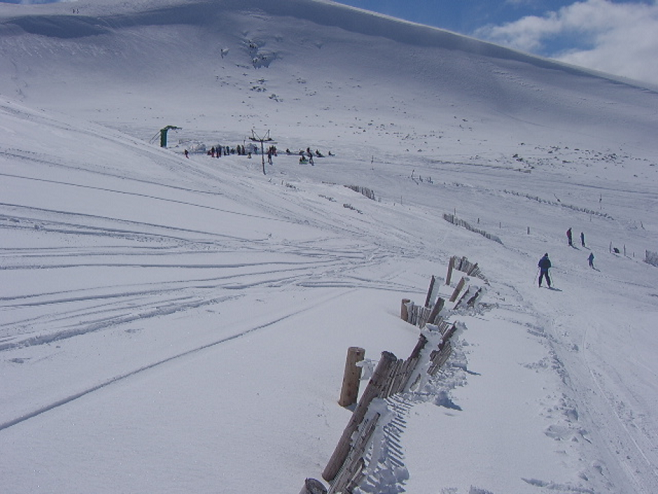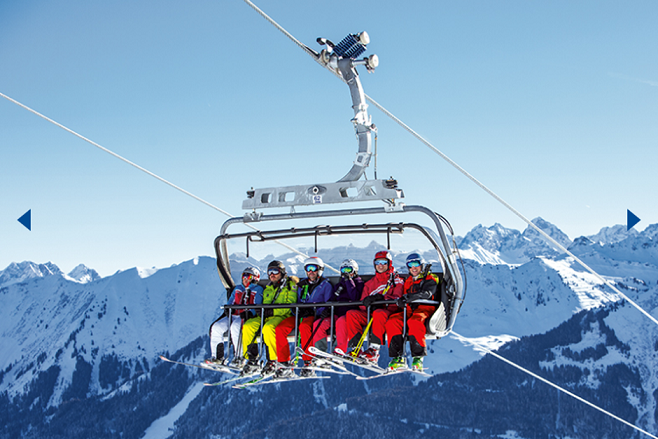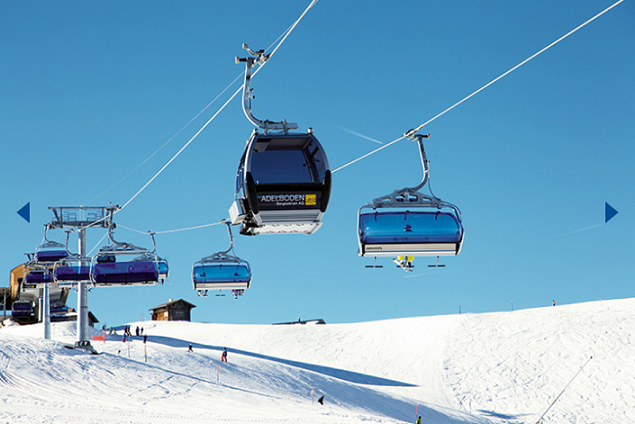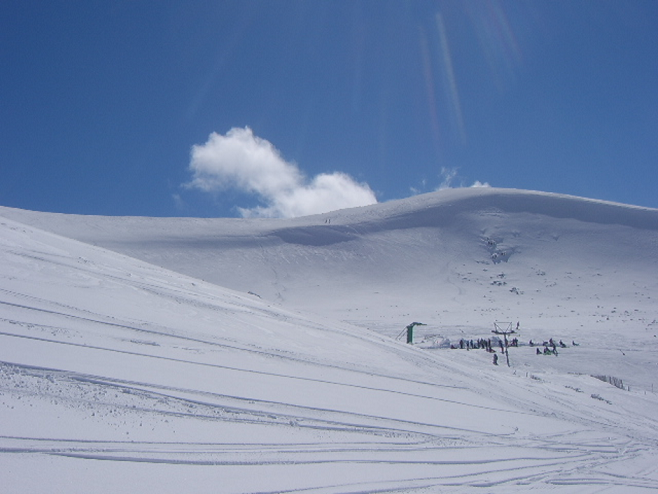
In 2018 and again in 2019 the SE Group were commissioned by Highlands and Islands Enterprises (HIE) to report on a sustainable, economically viable business plan (see here) for the redevelopment of the Cairngorm ski resort with its knock on economic benefits to the local communities.
Since then a new report into reducing snow cover caused by climate change has been issued with claims that the snow line will be higher up the mountain (see here). This means that at some point in the future the pistes below the Shieling will be devoid of natural snow cover for a lot of the winter season, effectively putting the Carpark and Fiacaill ridge tows out of action!
The SE Group report proposed a two phase development of up to 10 years without any indication of where funding, approximately £16.5m for stage 1 and £10.5m for stage 2, will come from. HIE initially said that it hoped some “philanthropic entrepreneur” would appear to fund the project. Well that hasn’t happened yet, so now I am going to propose what I hope will be seen as an alternative way forward and maybe HIE will listen.
I have broken this down into five phases.
PHASE 1. 2020. A 6 person chairlift from the Daylodge to a rebuilt Shieling

The terminal would be designed for integration into Phase 2.
The installation of a chairlift would allow reliable access to the Ptarmigan/ upper Ciste area using the M1 poma for the more experienced skier/ boarder and also to the upper slopes of Corrie Cas. A rebuilt Shieling could then be used as the ski school meeting place and restaurant. A chair/gondola hybrid would be preferable allowing more comfortable uplift, for beginners in winter and tourists in summer, to the re-commissioned Shieling improving the overall “guest experience, but this is considered to be too expensive initially as an early return to improve the economic viability of Cairngorm Mountain is more important.
Moving the Snowfactory up to the Shieling would also allow the Shieling platter area to be used as a beginner’s area, as it used to be, and where an under-used tow is already in place. Heather cutting could be utilised to improve and enlarge this area, reducing the damage to the environment, although it will need re-cutting every 3 – 4 years. It also reduces the cost of new piste creation proposed by the SE Group (see here), which has been estimated to be in the region of £850k.
The Fiacaill ridge tow could be kept to allow access to more experienced skiers/ boarders and even allow new terrain along the ridge from the top of Coire Cas as and when snow conditions allow.
A price has been obtained from Doppelmayr for this phase of approximately 6m euros, valid for 2020. The investment could be paid back in as little as 4 seasons. N.B. The price of £7.513m for Lift “B” as proposed by the SE Group was from May 2018.
PHASE 2. A chairlift/ gondola hybrid from the Shieling terminal to the Ptarmigan

A 6/6/8 (chair, chair, cabin combination) is recommended by Doppelmayr and at the same time PHASE (1) could be increased to a 6/6/8 combination too, improving the “out of base” capacity as numbers increase allowing better access to the Ptarmigan and the upper Ciste tows for all grades of skiers and boarders. The chair/gondola hybrid is the preferred but also the most expensive option allowing the non-skiing visitor trade to the Ptarmigan which could still be revamped.
Once built, the M1 poma could then either be removed or moth-balled and brought into use during busy periods.
PHASE 3. A 6 person chairlift from the Ciste carpark to link up with the West Wall Poma
As snowsport numbers start to return to a more realistic level, this lift could take some of the strain off the Cas side and help to extend the snowsport season as it is well known that the Ciste tends to get snow earlier and hold it longer than the Cas.
This phase could also include re-building the Ciste restaurant, improving the catering provision for year round use, and the provision of spaces for campervans in the Ciste carpark.
PHASE 4. A 6 person chairlift to replace the West Wall poma
This would allow access to the Ptarmigan for beginners all the way from the Ciste carpark and, for intermediate and above skiers/ boarders, from the Daylodge via the Daylodge poma into Coire na Ciste in the right weather and snow conditions.
PHASE 5. A 4 person chairlift from the Shieling area to the top of Coire Cas

Most of the lifts on Cairngorm are now quite old, and t-bars/pomas take up space that could be used for snowsports terrain. Removal of the Cas tow would open up terrain currently used as uptrack and using the heather cutting technique new trails could be opened up as required and in different locations every year.
General Comments
ALL DRIVE STATIONS WILL BE BELOW GROUND LEVEL AND COVERED IN LIVING WALL TO LESSEN THE ENVIRONMENTAL AND VISUAL IMPACT.
The creation of mid-mountain lift stations would enable the creation of mountain bike trails, increasing the financial viability of the lifts, while protecting the fragile Cairn Gorm plateau.
Conclusions
The difference between the proposals outlined here and those in the SE Group Report is that these prioritise re-establishing uplift for snowsports to the Ptarmigan bowl and in Coire na Ciste before the replacement of the tow in Coire Cas
The plan allows a gap in the construction between each of the phases of two to four years. It would allow an improvement in revenues to Cairngorm Mountain (Scotland) Ltd and therefore an earlier return on HIE’s investment, the capital spend spread over five phases rather than two and customers confidence to return knowing exactly what uplift will be available at the end of each of the construction phases. This plan also allows for a longer time scale which could be as much as 12 to 15 years for full implementation.
I know this is not perfect, but we need to be realistic. With the uncertainty of the weather in the future, small improvements are probably the best way forward.
What needs to happen
HIE have contracted two companies, 360 Architecture and Jura Consultants (email :- luke@jura-consultants.com) to form a masterplan for the future of skiing on Cairngorm with an open day due to be held in Aviemore. But snowsports on Cairn Gorm isn’t just about those who live locally. It should be of concern to every snowsports club, skier/ boarder in the U.K. We need to get everyone who has skied/boarded and would like to do so there again involved in pushing for new uplift and a better future for the mountain business. Please comment and share this post to every skier/ boarder you know and send your comments to the masterplanning consultants at the contact email shown before it is too late and HIE proceed to repair the Funicular railway.
We need this now, before Cairn Gorm and the fantastic skiing/boarding that there once was, becomes a part of history. Let’s return Cairngorm Mountain to being a “World Class” resort.
I have my own plans, some of which corrolate with yours and were formulated with the help and wisdom of Graeme Pringle. Please email me and I will send you a bunch of PDF’s with reasoning behind my own suggestions.
The contact email for the masterplanners is incorrect, sorry my mistake. It should read……email:- luke@jura-consultants.co.uk.
Similar ideas to ours, however for all year round viability we would propose a twin cable gondola from the existing bottom station straight up to the Ptarmigan (c 8 per car) These can operate in high wind conditions and move people both summer and winter at a rate according to demand. Also a 4 or 6 person high speed chair from the bottom up to below the head wall which would take skiers of all standards, boarders, mountain bikers, walkers and the general public all year round. We know where this equipment is available as nearly new refurbished equipment at a vastly reduced cost. The car park and Coire Cas tows could go, the funicular components are a sellable asset and can be sold off . Further info. can be had by contacting us via messenger or email..
Jonathan Cook and Graham Nugent. I would be really interested to see your ideas,especially the bit about refurbished equipment, however, the people who really need to see them are the masterplanners. It has been mentioned before that the Chinese are very adaptable with building projects and maybe that should be a line to investgate as well? Jura Consultants are the people who will be assessing alll the information to form the masterplan which hopefully will be what snowsport enthusiasts want. Could you please both send your ideas to :- luke@jura-consultants.co.uk. It is important that they realise the strength of feeling for proper uplift.
Some good ideas here but none of it will happen if HIE spend £10million plus on repairing the funicular. The Scottish Government will not permit any further public expenditure on Cairn Gorm if repair of the funicular is seen as the “solution” to current problems. We need to make it absolutely clear to politicians that repair of the funicular would only take us back to square one. That means the focus of facility provision on the mountain would revert to meeting HIE’s primary aim. This is to meet the needs of coach tourism and provide such visitors, generally in the 55+ age group, with a ride on a train followed by coffee, cake and a high altitude shopping experience. This was the basic recommendation of the HIE consultants who proposed the original construction of the Cairn Gorm funicular as a “must do” attraction similar to the Loch Ness Monster Visitor Centre. Returning to square one would therefore do nothing to meet the needs of the outdoor recreation community. To secure any future public money to meet outdoor recreation needs on Cairn Gorm will probably require the mothballing the funicular so that the public money saved can then be spent on new chairlift/gondola/drag lift provision. Failing this we should ensure, as far as possible, that the only politicians elected to serve in the next Scottish Parliament, from 2021 onwards, are ones who are committed to a £1 for £1 policy for Cairn Gorm. That is, for every £ spent on repairing or removing the funicular, a further £ is spent on the provision of new uplift facilities to meet outdoor recreation needs.
The “outdoor recreation community” does not have any “needs” that will be served by mechanical uplift at Cairngorm. Only the downhill skiing community needs mechanical uplift. The rest ie ornithologists and other naturalists, ski tourers, climbers, walkers, mountaineers and mountain bikers can all enjoy the hills in their relatively “undeveloped” state. For the record, I enjoy, and am still fairly active, in all of that list of activities. And the big elephant in the room, which must be considered in any future plans, is the climate emergency. How much of the 6 million cost of the first phase of new uplift proposed would have been paid off this season so far. I would suggest it would be a very small, very round number. There is little prospect of any paying customers before the end of the month.
I was a ski instructor on Cairngorm in the late ’60s and early ’70s. Certainly the snow conditions then were far more reliable than they are now. I still prefer to make the pilgrimage North from South Wales to the Highlands than spend money and carbon footprint on flying to Canada or Europe.
I viewed the building of the funicular with alarm and after a thirty year gap came back to use it some eight years ago. Having a background in sustainable tourism, I felt at the time, this was a retrograde step from the lower impact of chairlift or gondola installations. Nevis has worked very we with a gondola. Yes I know that a funicular was supposed to get around the problem of high wind. Having the old chairlift stop while we waved around in ferocious gusts was part of the Cairngorm experience.
The reality is that for snowsports to be sustainable we need good and reliable beginner slopes. The Ptarmigan gives us that with a long season. Even 50 years ago, when possible, I took beginners up to the Ptarmigan in preference to the lower nursery slopes and progression was good, launching many skiing careers that branched out into many related areas of mountain activity. A chair down was the preferred option after a day gaining experience on the topmost slopes.
Erosion is a fact of life in any mountain environment. Maintaining and realigning a pylon for a chairlift is an easier option than doing the same for what is effectively the rigid railway track.
Unlike a poma or T bar a chairlift or gondola gives year round access while allowing slow growing vegetation and cover for Grouse and Ptarmigan to carry on beneath.
I feel that scrapping the funicular and recovering whatever can be salvaged by onward sale and the employment of reconditioned chairlifts really is the only sustainable way forward. There is little point in having a vast network of tows that are under employed for most of the season.
50 years ago the old car park tow was very rarely used, sometimes not being run for a whole season. Quads, sixes or gondola options applied intelligently would allow access to runs higher up the mountain and down lifting at the end of the day.
Snow making moved up the mountain makes better sense, allowing lower slopes to regenerate naturally.
When all is said and done even if we see half or less of the mountain being covered reliably. It is always easier to walk down a track than up, at the end of a day on the pistes.
Let’s be realistic. Scottish skiing is an experience. It introduces many new people to a wild environment. It will never rival any alpine resort and should not be promoted as such.
Don’t worry about red or black runs, let people come and enjoy the altitude and snow. They in turn will both have fun while coming to appreciate what climate change really means.
That in itself is laudable and probably affordable if we resist the temptation to be over ambitious.